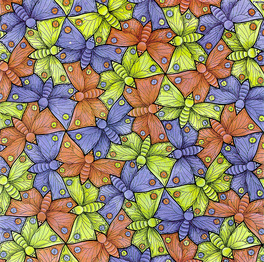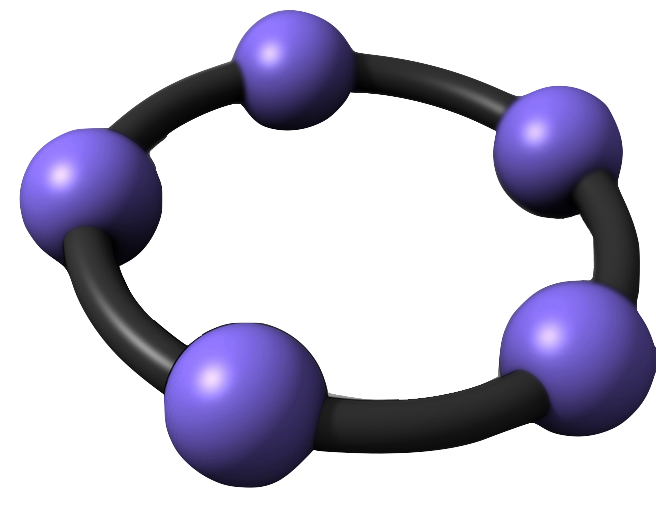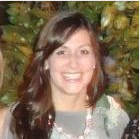Session Zero || Getting on the Same Page
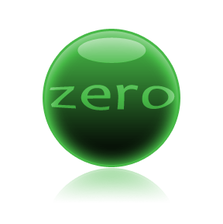
EDpuzzle || 2 options: use class code bqZZr3 -OR- log into embedded content with your Google Account (or Edmodo account) when the time comes.
There are other a few other tools that you may (or may not) use during this lesson. You may want to install Pixlr Editor (Chrome APP) or Notability (from the APP store).
Also, let's get either GeoGebra or Desmos ready. (Or both if you're feeling adventurous!)
There are other a few other tools that you may (or may not) use during this lesson. You may want to install Pixlr Editor (Chrome APP) or Notability (from the APP store).
Also, let's get either GeoGebra or Desmos ready. (Or both if you're feeling adventurous!)
What are we doing here?
|
Butterfly (Tessellation 70), M.C. Escher
|
During this session we will explore several content-specific tools and resources, in addition to cross-curricular tools, which will help enable students to build their own understanding and success in Math courses.
In this session you will:
After the lesson, you will have an opportunity to explore the tools and resources demonstrated. Consider the ways in which you might use these tools in your lessons and classes. |
Standards addressed in this lesson:
|
CCSS.MATH.CONTENT.HSG.MG.A.3
Apply geometric methods to solve design problems (e.g., designing an object or structure to satisfy physical constraints or minimize cost; working with typographic grid systems based on ratios). |
CCSS.MATH.CONTENT.HSA.CED.A.3
Represent constraints by equations or inequalities, and by systems of equations and/or inequalities, and interpret solutions as viable or nonviable options in a modeling context. |
CCSS.MATH.CONTENT.8.G.A.2
Understand that a two-dimensional figure is congruent to another if the second can be obtained from the first by a sequence of rotations, reflections, and translations; given two congruent figures, describe a sequence that exhibits the congruence between them. |
CCSS.MATH.CONTENT.8.G.A.3
Describe the effect of dilations, translations, rotations, and reflections on two-dimensional figures using coordinates. |
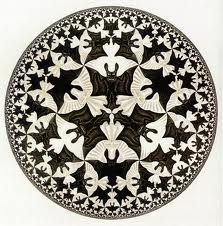
We've seen a number of ways that tessellations can be accomplished through translation, rotation, and reflection, but what about dilation? Click the image to the left to see some examples of how M.C. Escher accomplishes this.
Unpacking the Slices:

- How do you envision this lesson translating to your classroom?
- What tools modeled in this lesson do you see yourself adding to your own digital toolbox?
- This lesson modeled many digital tools and resources. How could you modify this kind of lesson with the amount of technology that best fits your comfort level?
Tools & Resources we used:
Your Facilitators:
© Images may be protected by copyright. They are used here in accordance with fair use principles or are designed by and © Alex Kaulfuss.

This work is licensed under a Creative Commons Attribution- NonCommercial 4.0 International License.
